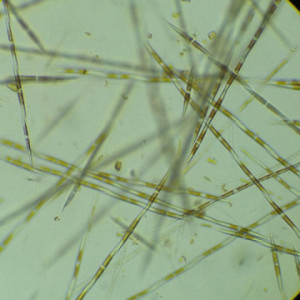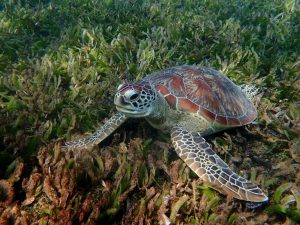Domoic acid was one of the first things I wrote about as I tipped my toes into science writing (who doesn’t experiment in college, especially with acid).
 Researchers monitoring the unprecedented bloom of toxic algae along the west coast of North America in 2015 found record levels of the algal toxin domoic acid in samples from a wide range of marine organisms. The toxin was also detected for the first time in the muscle tissue or filet of several commercial fish species.
Researchers monitoring the unprecedented bloom of toxic algae along the west coast of North America in 2015 found record levels of the algal toxin domoic acid in samples from a wide range of marine organisms. The toxin was also detected for the first time in the muscle tissue or filet of several commercial fish species.
Investigations led by scientists at the University of California, Santa Cruz, help explain the extraordinary duration and intensity of the 2015 domoic acid event, the spread of the toxin through the marine food web, and its persistence in Dungeness crab months after the algal bloom disappeared from coastal waters. Ocean scientist Raphael Kudela, the Lynn Professor of Ocean Health at UC Santa Cruz, will present the latest research findings at the American Geophysical Union (AGU) Fall Meeting in San Francisco on Friday, December 18.
Domoic acid is a potent neurotoxin produced by a type of microscopic algae called Pseudo-nitzschia that occurs naturally in coastal waters. Blooms of the toxic algae along the California coast typically occur in the spring and fall and last just a few weeks. This year, however, unusual oceanographic conditions (unrelated to El Niño) led to the largest and longest-lasting bloom ever recorded.
“The duration of the bloom and the intensity of the toxicity were unprecedented, and that led to record levels of the toxin in species such as anchovies, razor clams, and crabs,” Kudela said. “We also saw the toxin in organisms and parts of organisms where we thought it was not supposed to be, like the filets of fish.”
Monitoring programs are in place to ensure the safety of seafood for human consumption, leading to the closure of several west coast fisheries and the delayed opening of the Dungeness crab season. In humans, domoic acid poisoning is also known as amnesic shellfish poisoning because it may cause permanent loss of short-term memory, as well as neurological and gastrointestinal symptoms. In 1987, four people died of domoic acid poisoning in Canada after eating contaminated mussels, but such cases are rare.
The levels of toxin detected this year in the filets of salmon, rockfish, and ling cod were well below the regulatory limits, Kudela said. But once the toxin gets into the muscle tissue, it will stay in the fish and in the food web much longer than if it is just in the intestinal track.
Story Source: The above post is reprinted from materials provided by University of California, Santa Cruz. The original item was written by Tim Stephens.
 Thirty-four people were hospitalized on Monday in Vatomandry, in the east of the island, after eating the protected species, the Health and Food Safety Control Agency said.
Thirty-four people were hospitalized on Monday in Vatomandry, in the east of the island, after eating the protected species, the Health and Food Safety Control Agency said.
